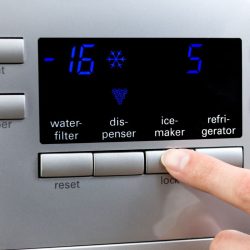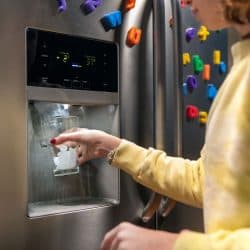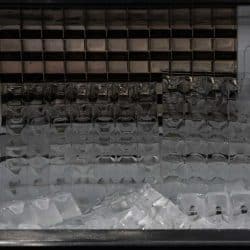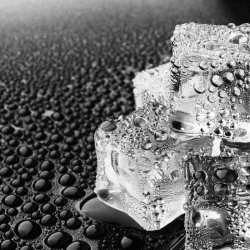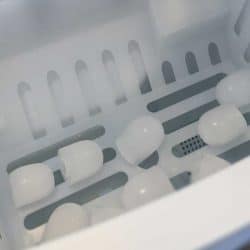The refrigerator configuration with a bottom freezer is favored for its space-saving advantages, aesthetics, practicality, and organizational possibilities. It enables you to load and retrieve food without exerting too much effort while putting away groceries.
You might wonder how to activate the ice maker in the bottom freezer. We conducted thorough research to give you the answer.
You can activate the ice maker of the GE bottom freezer through any of the four types of control panels. Each type has an On/Off switch:
- Ice Button Cap Touch Control
- Ice Button Cap Touch Control with Dual Ice Maker Option
- Control on Models Without Ice Dispensers
- Touchscreen LCD (Cafe)
These control panels are in bottom-freezer dispenser models containing an ice maker.
It is a luxury always to have ice available. Most of the time, all ice producers operate similarly and are straightforward appliances. To learn how the above response functions, continue reading!
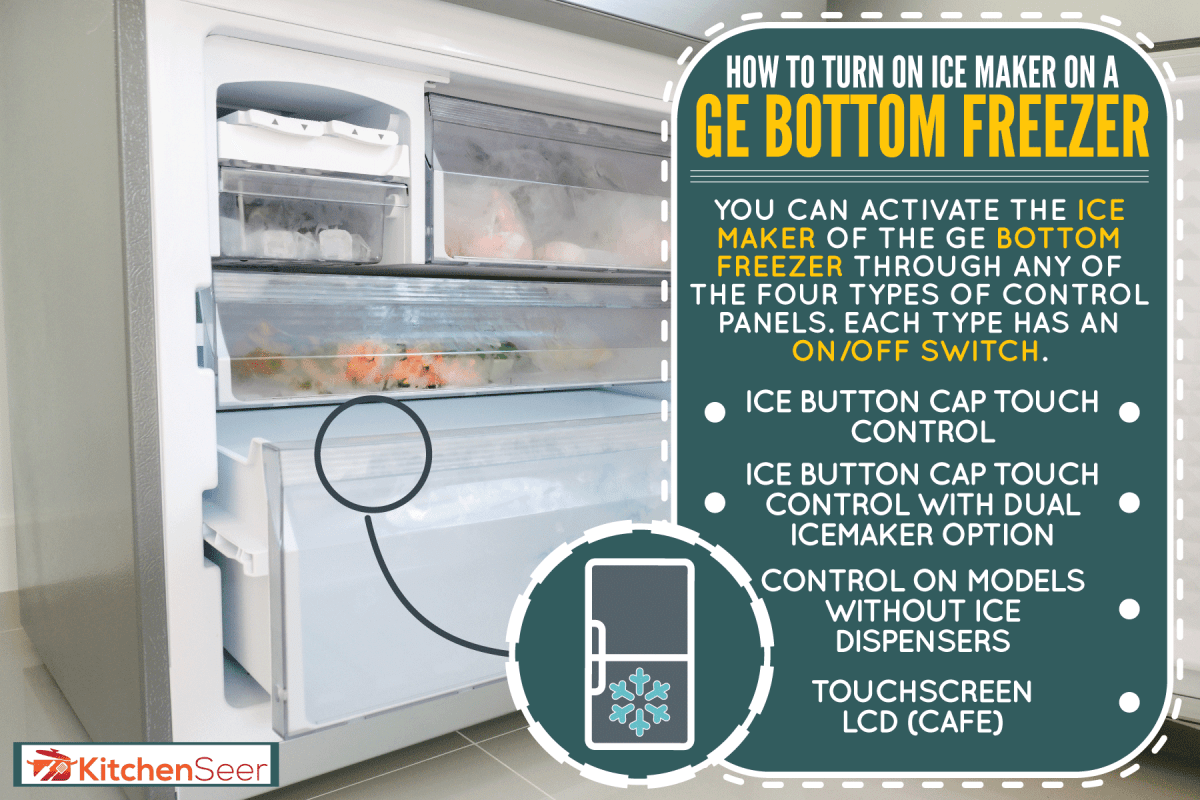
Turning On The Ice Maker In A GE Bottom Freezer
There are different instructions depending on the type of ice maker and refrigerator. However, this refrigerator employs a control panel feature to turn "on" and "off" your GE bottom freezer ice machine.
Additionally, there are four primary sorts of control panels. An explanation of each type of control panel's operation is provided below.
Ice Button Cap Touch Control
Pressing and holding the ice button for around 3 seconds will allow you to determine whether the ice maker is on.
Right next to the words "Ice Maker," the ice maker state will appear, located under the temperature display setting. Press the ice button for about 3 seconds to modify the ice maker's status.
Ice Button Cap Touch Control with Dual Ice Maker Option
Tap your icon to discover if the ice maker is on or off. This is next to the freezer setting on the control's left side.
Underneath the temperature display setting to the right of the words "Ice Maker," there will be a display of the ice maker status. Tap your ice maker button until the chosen setting appears to modify the ice maker's "on."
Note: Not every refrigerator with a bottom freezer has two ice makers. After an ice maker is placed in the freezer section, the ice bottom will be shown on the control.
Control On Models Without Ice Dispensers
By opening the left refrigerator door, check for the ice maker light to the left. It is lighted if the ice maker is running. When the desired setting appears, touch "Ice Maker" and hold it until the ice maker's state changes to "on."
Touchscreen LCD (GE Cafe)
Tap "Settings" in the upper right-hand corner of the screen, then swipe right until you see the ice maker, then turn it on. The terms "On" or "Off" will be shown.
Tap the ice maker until the desired option is shown to modify the ice maker's state.
What Should I Do If My Ice Maker Stops Making Ice?
When your ice machine quits operating, hold off on calling a service. To save money and frustration, try these troubleshooting methods first. Ice makers have faults sometimes.
Being the owner of a fridge with an ice machine comes with this sad truth. Here are some solutions for typical ice maker issues.
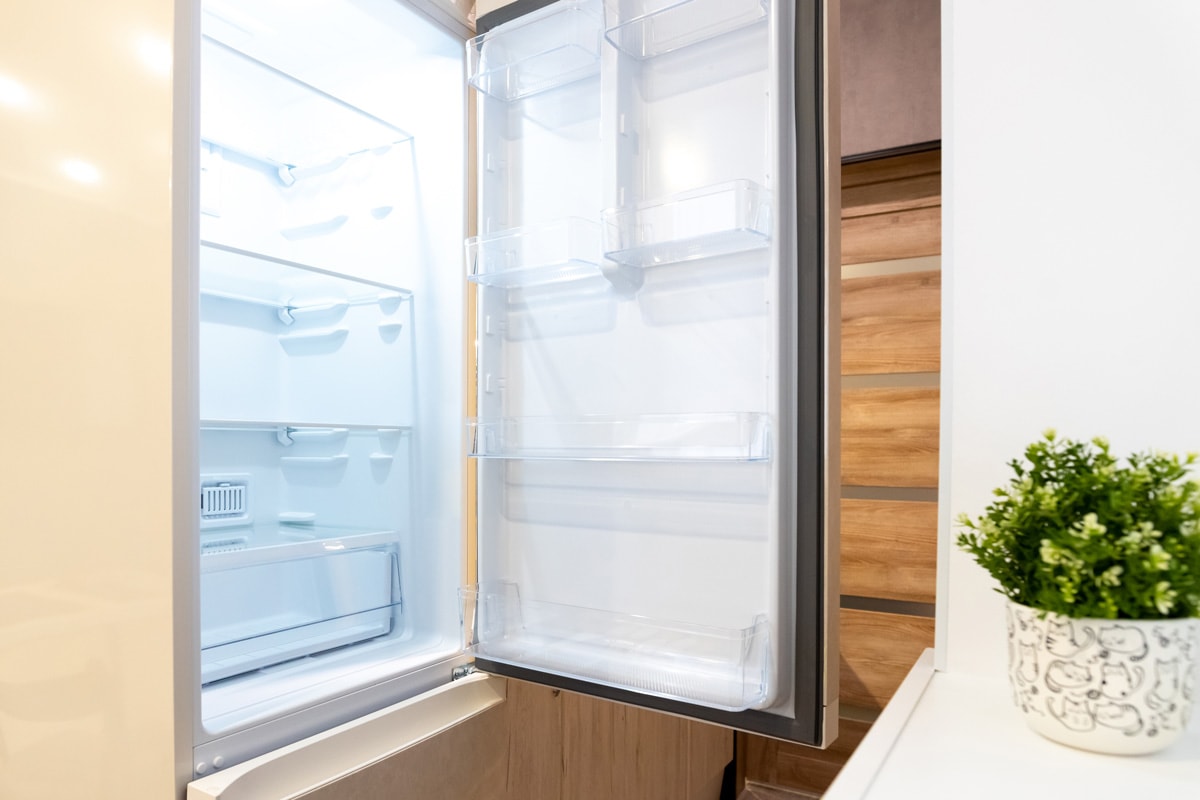
Ice Not Ejecting
If you see ice in the ice mold, this indicates that your ice machine is getting water and that the issue is probably not with the water system. It's most likely an electrical or a mechanical problem instead.
1.) It's a common mistake to push the control arm toward the off direction while moving items around within the freezer, which stops the ice from developing.
To correct this, the metal control arm must be located and placed in the down or on position.
2.) Another possibility is that the motor, gearbox, or electrical connection is at fault if the mold is loaded with ice and the control arm is in the on-down position. To fix this, keep in mind that all power lines are firmly in place.
Disconnect the power and water supply valves before sliding the unit away from the wall. The quick-release plug can be found within the freezer on the rear wall. Remind the connection and plug it back to ensure it's fully attached.
Add some water to the mold to dissolve any leftover ice. It is easier to remove the ice once it starts to melt. Restore the fridge's electricity, then raise its control arm to an off position.
Set the control arm to its original position and give the valve around 10 seconds to activate and load the mold with water.
Monitor the ice for approximately three to four hours until it freezes, then check if it still ejects. In this case, you'll probably need to replace the motor or gearbox.
When Ice Is Not Being Produced At All
A blockage in the supply line is frequently to blame for your ice maker's inability to create any ice or the formation of cubes that look smaller than usual.
1.) One of the most frequent causes of a clog is water frozen inside the tube. To fix a frozen line, move and disconnect the refrigerator.
You usually find the shut-off valve behind the fridge or under the sink.
Close the shut-off valve. Using warm water from a turkey baster, top off the water supply. The water pipes can also be defrosted with a blow dryer, or you can turn off the fridge for up to two hours.
Reconnect the refrigerator's electricity, then wait for the water to fill the ice mold. If the obstruction is anything but transparent, seek professional assistance to clear it.
2.) Another explanation is that there's a possibility that the ice maker's water filter is clogged. To resolve this, locate the water filter and replace it. Ice maker filters are often found in refrigerators to prevent them from freezing.
When Cubes Are Excessively Large Or Small
This time, you might also be perplexed by the dimension of your ice cube or the reason it differs from the norm.
It's likely that the ice maker only requires a minor adjustment if the ice crescents are too large or if there is no clog and they remain too small.
Remove the ice maker's cover before adjusting how much water is added to the mold during each cycle. It should come off easily because it is the white plate at the front section of the ice machine equipment.
If you're having trouble getting it off, gently pull it off from the housing with a flathead screwdriver. You need to see a screw and spring assembly, plus and minus indicators, and a cover underneath.
This regulates how much water is dosed. Reduce the amount of water taken per dose by screwing inwards toward the minus symbol and increasing it by screwing outwards toward the plus symbol.
Pros And Cons Of Having A Bottom Freezer
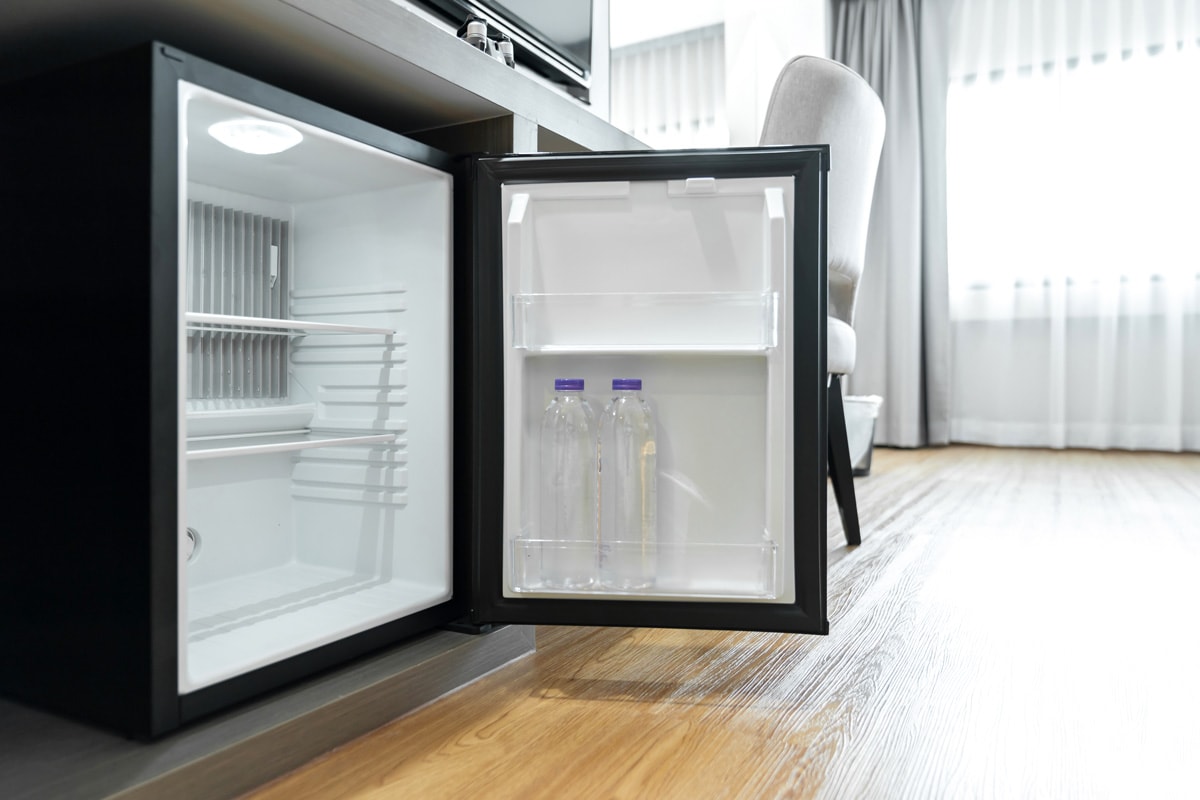
Since they operate continuously to maintain food at safe temperatures, fridges are considered essential home appliances.
When buying a new refrigerator, you can select the conventional top-mounted freezer or the recent designs with the freezer on the bottom.
The bottom-mounted freezer versions have a variety of advantages and disadvantages.
Advantages
The most widely used fridge compartment is at a refrigerator's line of sight and chest level. These are made possible with a bottom-mounted freezer.
It affords you to conveniently locate and get to your favorite beverages and food supplies.
Bottom-mounted models are frequently viable for older adults and anyone with medical conditions that make crouching and kneeling painful.
You won't be as likely to overlook the nutritious food you keep in the compartments until it's too late because vegetable crispers are frequently placed in plain sight.
Goodies are best kept up and out of tiny children's reach on the top shelf of a fridge with a bottom-mounted freezer. Slide-out drawers, more common in bottom freezers, typically occupy less space when opened.
To find the products you need, you can open just one section of the upper refrigerator portion of many bottom freezer models' French doors rather than the entire door.
In a tiny kitchen, both of these qualities conserve space.
Disadvantages
Generally speaking, bottom-mounted freezer refrigerators are more expensive to purchase than top-freezer refrigerators. French-door refrigerator models with a bottom mount are even more costly upfront than full-door refrigerators.
A fridge with a bottom-mounted freezer will certainly cost more to operate than one with a freezer on top, regardless of whether the model has an entire door or French doors.
Due to the average lifespan of a refrigerator being 15-20 years, the gap in energy expenses can build up quickly.
Evaluate the upfront outlay of the models and the power ratings of each when looking for a new fridge to get an idea of the estimated cost of possible new equipment.
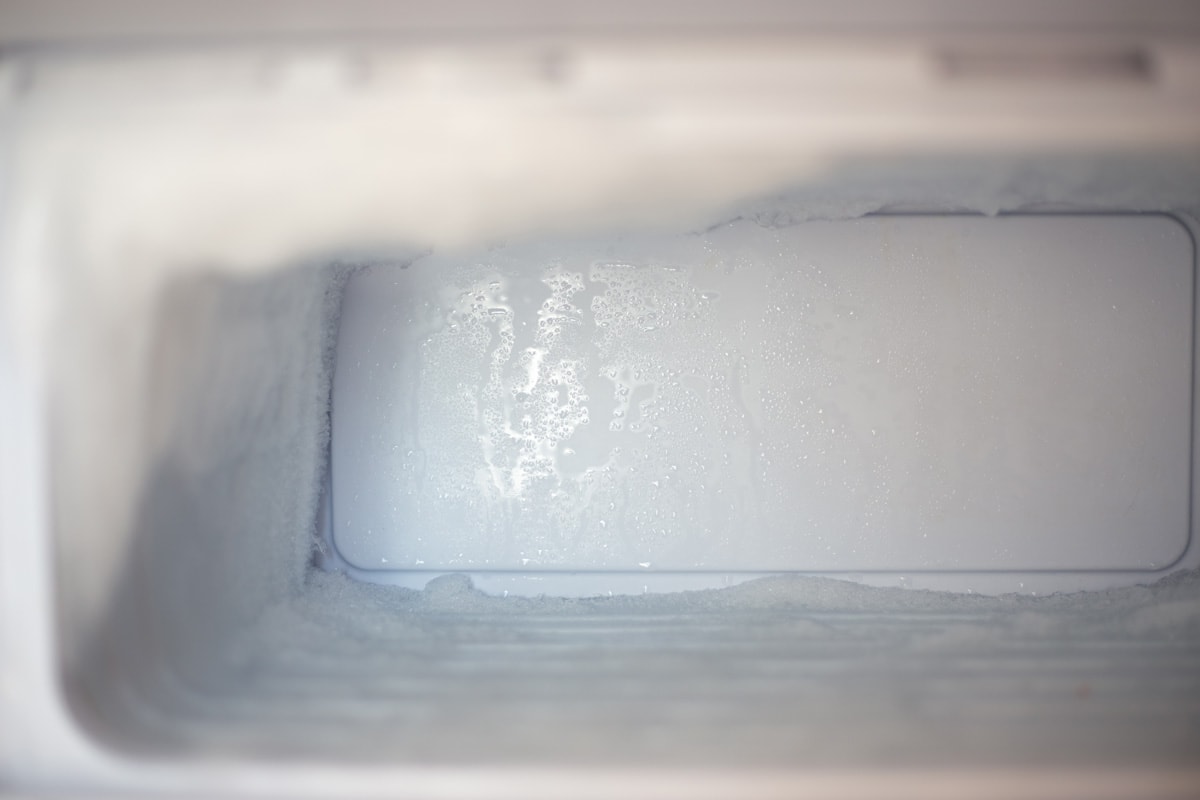
To Finish
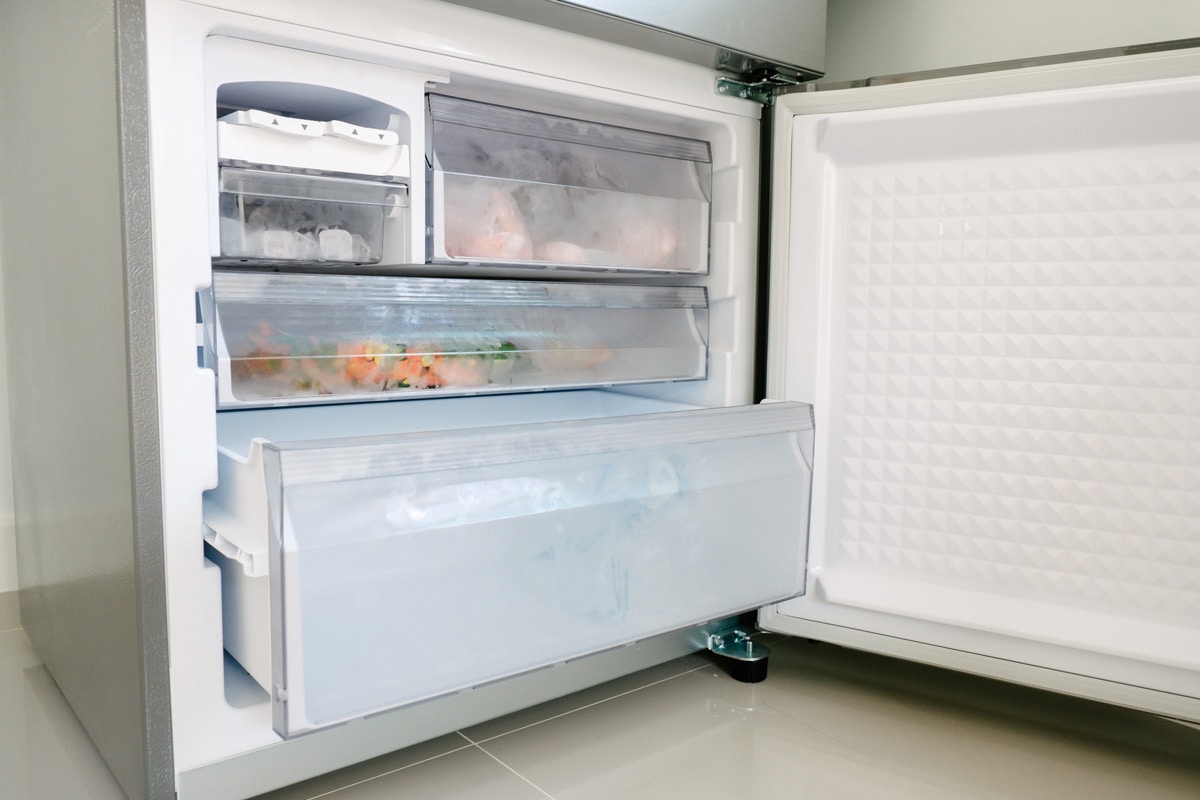
You have learned how to use the ice maker on your GE bottom freezer and the control panel to switch it on and off. The possible causes and fixes when your ice maker stops generating ice were also tackled.
And lastly, the benefits and drawbacks of having a bottom freezer were also discussed. It is hoped you find this post helpful.
Made it this far? Check out these posts!
Can You Add An Ice Maker To Your Fridge?

